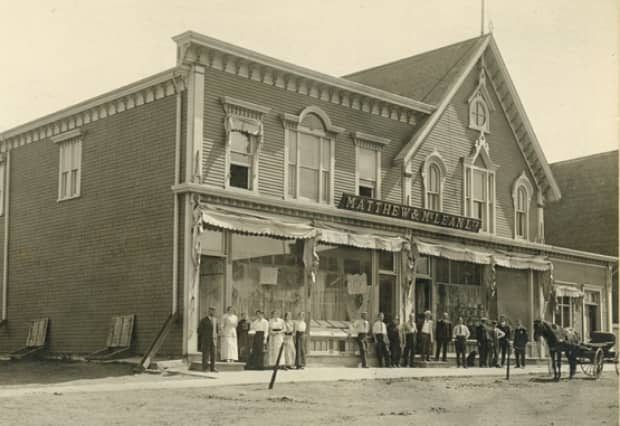Islanders loved their horses in P.E.I.'s Bygone Days

Reginald (Dutch) Thompson's column The Bygone Days brings you the voices of Island seniors, many of whom are now long-departed. These tales of the way things used to be offer a fascinating glimpse into the past.
There are plenty of reasons why Islanders loved their horses: they helped on the farm, took their people to and from "town," carried them to church and took young couples courting.
They became parts of Islanders' families.

Ginger MacKay eventually settled in Parkdale, but grew up in Canavoy near Mount Stewart and recalls his favourite horse, a palomino called King.
"He was a skinny horse, he wasn't very fat," MacKay told Dutch.
"In my history, in my whole life, I never remember the horse breaking his leg or having to get a vet for him — [our] horses were never sick, beautiful horses."
Malcolm (Mac) Irving of Cherry Valley was a farmer with a substantial acreage who didn't get his first tractor until 1956 — which was not that unusual on Prince Edward Island.
During the 1950s, nine out of 10 farms still used horses. But most road transportation by that time had switched from horse and wagon to cars. The loud automobiles scared horses, making it unsafe for them to share the roads.
Horses could go where cars couldn't
Enid Birch was born in Birch Hill, near Tyne Valley, in 1901 and grew up when cars were actually banned on P.E.I., because they would scare horses on the roads.

Birch said her favourite horse was a fast-driving horse named Tiny.
Birch said she had her first drive in an automobile in 1916 with Joe (Bun) Gaudet behind the wheel. Gaudet was a well-known restaurant owner who generously used to take people for spins around town in his car — for most, it was their very first time in a car.
Even when people did buy cars, they often still kept horses to transport them in the spring and fall when roads were muddy, or in winter when roads simply weren't plowed like they are nowadays. It wasn't until about 1960 roads were plowed consistently.
'She was a great old dependable thing'
James MacAuley who died in 1999 at age 99 was P.E.I.'s last veteran of the First World War.

He fished most of his life in Tracadie Harbour, but also chased the herring or mackerel as far as Tignish.
In the fall of 1919, he said it took him two and a half days to travel by horse and cart from Tignish to Charlottetown. At night he knocked on strangers' doors and asked for lodging, sleeping in the barn with his horse. He said the families would offer him a meal and gather around the table to see what news he had to tell.
MacAuley said he almost always drove a mare. He had one named about Maude, another named Nellie and what he called his "kicking horse," Minnie.
Twice a week, they would haul cartloads of fish to Market Square in downtown Charlottetown (where Confederation Centre is now) or to Falconwood Hospital for the mentally ill, on the same property Hillsborough Hospital now stands.

Peter Whitty worked at the well-known Matthew & McLean's general store in Souris and delivered groceries and one-tonne loads of coal with a cart and his horse, Jess.
"You'd have to get up at six o'clock, go down and feed. It was a 10-minute walk from where I lived — there was no cars then!" Whitty said with a laugh. "Then eight o'clock I'd go down, hitch him up and go all day till six o'clock.
"Dandy horse. You'd be delivering groceries into a place she'd stay there half an hour, an hour ... she was a great old dependable thing."
Whitty said he was good to Jess, feeding her two or three raw eggs with her oats every night.
"Best thing in the world! Oh yeah, get 'em nice and shiny," he said.
In 1956, Matthew & McLean bought a couple of trucks, replacing the horses. The store building still stands in Souris.
More from CBC P.E.I.

